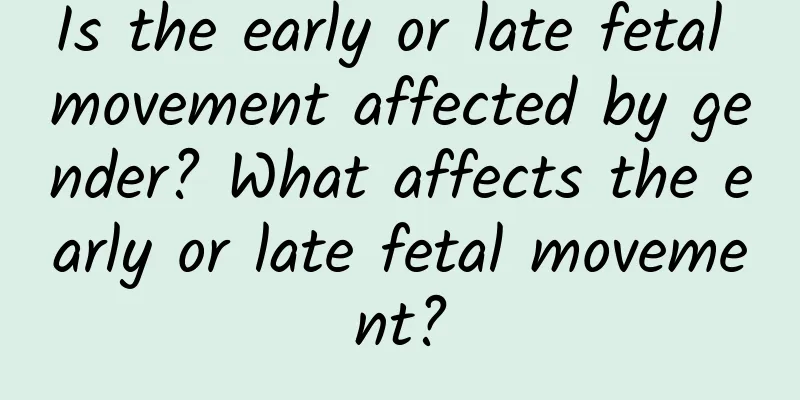Amniotic fluid embolism is threatening every pregnant woman, but it is not invincible!

|
"Hurry, hurry...someone come to operating room No. 2!" A shrill call broke the original order in the operating room. Upon hearing this sound, everyone who heard it immediately took action: those who could not leave the patient in surgery tried to look out from the operating room door, hoping to lend a helping hand; the rest of the staff quickly ran to operating room No. 2. They were not there to watch the fun, they knew: such calls in the operating room were calls for life. This meant that there must be a patient with a serious problem, a life-threatening problem, and an urgent need for more help. At that time, I was preparing for general anesthesia for the next operation. When I heard the voice, I almost rushed over. Although the journey was short, a terrifying scenario flashed through my mind: Operating Room 2 was a dedicated operating room for cesarean sections. Could something have gone wrong with the pregnant woman? You know, once something went wrong, it would almost always result in "two deaths". The first thing I saw when I rushed in was the child wrapped in a stretcher. Since there was only one nurse with the child, there must be something wrong with the child. The first thing to do is to look after the baby, because the newborn is too fragile. An adult can go for several minutes without breathing, but a baby will have a big problem if he doesn't breathe for just a few seconds. I turned to look at the pregnant woman on the operating table: She was still conscious at that time. She might have heard the nurse's voice change and seemed to have guessed something. She kept asking: What happened? Looking at the monitor again, the extremely fast heart rate, extremely low blood pressure, and unmeasurable blood pressure... all indicate that the mother is in extreme danger. Looking at the doctor who performed the anesthesia at that time: the director was already standing next to her without her knowing when. I heard the director clearly and accurately give the order: consider amniotic fluid embolism, and immediately start the rescue plan. Thus, a battle with the god of death immediately began. What we were fighting for was the life of a 25-year-old young mother who had not even had a chance to see her child. After emergency endotracheal intubation and positive pressure ventilation, the mother's ventilation was guaranteed. At the same time, effective artificial ventilation also effectively increased the oxygen partial pressure in the mother's body, effectively combating the microcirculation disorder caused by the massive loss of red blood cells and acidosis. The nurses were also very helpful and immediately established multiple intravenous accesses for the parturient. After treatments such as blood pressure increase, anti-allergy, anti-shock, and acid correction, the parturient's vital signs improved. Then, they also dynamically checked the blood routine, coagulation, blood gas analysis, electrolytes, and thromboelastogram. However, even such a professional and quick-response rescue operation still failed to stop the fierce momentum of amniotic fluid embolism. After just a few minutes, the mother's condition worsened and her respiratory and cardiac arrest occurred. So we immediately took turns to perform chest compressions. During the compression, the ECG monitor showed ventricular tachycardia, so we immediately performed defibrillation. After continuing chest compressions, sinus rhythm was restored after a few minutes. After this round of rescue, the mother's vital signs had stabilized, but she had inevitably suffered from cerebral ischemia, hypoxia and edema, and her lungs could only rely on a ventilator for ventilation. As for consciousness, it was basically impossible for her to regain consciousness that day. On the operating table, the obstetrician re-adjusted the surgical incision. Soon, the mother was transferred to the intensive care unit for further treatment. Some people say that when a woman gives birth, she is walking through the gates of hell. Perhaps amniotic fluid embolism is one of the gates of hell. Finally, let us briefly introduce amniotic fluid embolism: Amniotic fluid embolism refers to the formation of amniotic fluid entering the maternal blood circulation during delivery, causing a systemic response syndrome, pulmonary hypertension, pulmonary edema, severe hypoxemia, respiratory failure, circulatory failure, cardiac arrest, severe hemorrhage, DIC, multiple organ failure and other symptoms. Most of them occur within 2 hours before the delivery of the fetus or within 30 minutes after the delivery of the placenta. Typical manifestations are sudden hypoxemia, hypotension (inconsistent with the amount of bleeding), and coagulation disorders during and after delivery. Amniotic fluid embolism is an extremely rare and serious obstetric complication during delivery, with an acute onset, severe condition, unpredictable, and high mortality rate. Accurately identifying amniotic fluid embolism and immediately performing emergency rescue is the key! |
<<: Is it really okay for the baby to sleep after eating?
>>: What is air cushion BB cream? Which should I use first, air cushion BB cream or concealer?
Recommend
What to do if low progesterone causes miscarriage
Progesterone helps stimulate uterine growth durin...
What to eat to make more breast milk
For mothers who breastfeed, if they want to ensur...
Can I still get pregnant after six months of amenorrhea?
When women reach a certain age, such as in their ...
Causes of bleeding in stool 20 days after delivery
For women who have undergone caesarean section, y...
A hard lump appeared on the vulva. It hurts.
A hard lump growing on the vulva is usually quite...
Pregnant woman constipation stool blocked in the anus
Constipation is more common among pregnant women....
How to tell if a papaya is ripe? Is it OK to eat one papaya a day?
Eating papaya in moderation has the benefits of b...
How to protect the fetus during early pregnancy bleeding
Pregnancy is a very important thing for every wom...
Causes of back pain during eight months of pregnancy
Many pregnant women will feel that their bodies h...
Prelude to ankle sprain: Do you know your ankle well enough?
Ankle sprain can be said to be the first of the t...
Can women with breast hyperplasia wear bras?
Breast hyperplasia is not a very serious disease....
The protagonist of "The World" died of stomach cancer. What habits are harmful to the stomach? What should we do to prevent stomach cancer?
The protagonist of the hit TV series "The Wo...
The harm and treatment of brown discharge in girls
Brown secretion is a manifestation of abnormal le...
What is the most effective food for constipation in early pregnancy
We all know that early pregnancy can be said to b...









